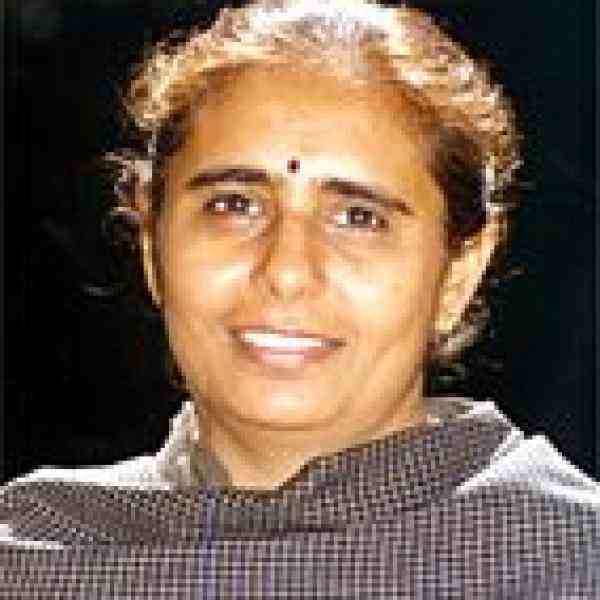Introduction
Parul and Falgun Sheth have adopted a multifaceted strategy to strengthen India's existing municipal education system as a way to prevent child labor. By encouraging parents, teachers, and citizens generally to act as change agents, Parul and Falgun are creating a network of individuals responsible for the development of these future citizens.
The New Idea
Parul and Falgun Sheth are teaching communities how to invest in the generations to come. Collaborating with the municipal school system, parents, and children themselves, Parul and Falgun's program is working to end child labor. The organization, Shaishav, meaning "Childhood," trains local teachers, offers innovative support for schools, and involves the community in all aspects of education.
The varied strategy trains local women and men to work with children likely to join the ranks of child labor. Balwadi [I] (pre-school) teachers set up centers anywhere they can and teach young children skills that will help them enter and complete school more successfully. Education activists, lokshikshaks, [I] bring working children and potential child laborers back up to an appropriate school level and then provide extra support so the children can enter school and continue in their studies.
Shaishav also enhances education as a whole, providing schools with low-cost teaching aids, an interesting curriculum suited to children's needs, and other interactive enterprizes like balmela [I] (educational theme fairs managed and attended by children.) Most importantly, Parul and Falgun's model will create and train a core group of teachers committed to carry on the work even after a particular Shaishav program has withdrawn from a school.
The Problem
Parul and Falgun believe that a diverse group of citizens comprising schoolteachers, parents, municipal corporation officers, and state education departments, can take responsibility for the education and development of children, putting an end to child labor. They believe that children go into the labor market because in their current situations they have very few options for attending school and learning. In a town like Bhavnagar, which mirrors small towns all over India, this problem is connected to a lack of schools and teachers as well as the mindset of the community who have not thought of creative solutions to combat the problem.
In 1994 there were 12,813 child workers in Bhavnagar–both the so-called "child" laborer (below 14 years of age) and the non-child laborers (14 to 18). Most of these child laborers belonged to Other Backward Castes (OBCs), one of the most economically, socially, and educationally backward classes in India. While a lot of children worked in hazardous conditions, exploited by their employers, many were working at a neighbor's farm or at their own home in the fields rather than going to school. Luckily, most children were not migrating to the city for jobs. However, children joining the labor force for want of other alternatives raised significant concern. Advocates of education, Parul and Falgun wanted to fight this trend as much as they wanted to fight against the scores of children being sent off to cities or working with the threat of health hazards and disease. Only 33 percent children of these working children are ever able to see the inside of a school. Sixty-seven percent had never been to school at all. Out of the 33 percent who have been to school, 71 percent study in municipal corporation schools, the lower quality schools parents can afford. Government data show that the highest dropout rates occur during the first and second grades. The second highest is in grades four and five. Apathy of parents toward the relevance and value of education is a major contributing factor in the illiteracy of many children.
The low-budget municipal schools in India also contribute to the lack of sufficient education. The schools are ill-equipped to serve children already enrolled, let alone integrate working children back into the mix. Bhavnagar alone has 94 municipal schools, none of which is capable or interested in addressing the problem of child labor. The community lacks the knowledge and awareness to match systematic, regular, education, an option better than child labor. Parents also need to be adequately informed on the value of a child's education. Parents respond well when they see education as convenient and relevant to daily needs. But there are almost no teaching materials available in Gujarati, the local language, and the little that is available is more relevant to the middle class. To make learning relevant, useful, and participatory, there is a need for learning materials that have been prepared with local requirements in mind.
Local young people, especially women, can play an important role in this process of change if proper training and support is given to them. They can set up learning centers to give children and their parents a taste of what a classroom looks like. These would serve as the first entry point into a regular education for children who have never been to school and who are first generation learners. However any such school will be a temporary arrangement, not a permanent solution. This time should be used to prepare and motivate the children and their parents to send the children to school as well as prepare and support the schools to handle more numbers and assure a quality education.
The Strategy
Parul and Falgun's main strategy is to involve and empower the local community to take charge of change. They identify and train local people to run balwadis in the city slums and Community Education Centers (CEC) for children of all ages.
Balwadi teachers set up schools in any available space within a city slum–someone's balcony or courtyard serves the purpose well. They prepare children to go to school and give them skills and education related to language, mathematics, and sensory development. After children turn five, they are admitted to school. These children will not only be prevented from joining the labor force in absence of any other distraction but also be more likely to complete their schooling successfully.
The Lokshikshaks identify all of the non-school-going children, working children, and potential child labor and motivate them to come to the CECs. Here children are prepared for a particular grade level and admitted. Elder children are supported to appear for external examination, and children enrolled in school are provided with support to continue their studies. Parul and Falgun have already achieved a major breakthrough by persuading municipal schools to accept children trained by other NGOs–even at the higher levels if they meet the school standards.
Identifying and training these teachers is a crucial part of Shaishav's strategy. An emphasis is placed on those who have potential but are not highly educated and have not had significant opportunities in life. They are offered an integrated training with the understanding that once training is completed, the person will work in the community for at least two years. This way the community is involved in the activities of the organization right from the beginning.
Once the children are enrolled in school, Shaishav mobilizes efforts to improve the environment in schools, making it child-centered, participatory, and fun. Children and teachers are actively involved in planning the various curricular and extracurricular activities using different methods and learning materials. One of the main vehicles for this initiative is a resource bus that Falgun designed. The bus is equipped with a library of books, toys, learning games, a video player, and a television to show educational programs that advocate against child labor and promote education. Parul and Falgun have already reached out to 19 schools with their mobile resource bus. Currently the bus stops at 14 schools in Bhavnagar and is eagerly awaited by the children and teachers alike. Another interactive way of involving schools in more participatory and fun learning methods is to help organize balmelas (fairs). Each fair revolves around a theme and stalls are set up to teach children various aspects of the theme through games. Sometimes the stalls are manned by the children themselves.
Because municipal schools have scarce resources and few teachers, Paul and Falgun hope to tackle that problem by identifying a core group of teachers who can start assuming the responsibility when the organization withdraws. Training has been provided to almost 150 teachers out of which 35 have formed a network of leaders already actively involved in four schools. Parul and Falgun plan to link these four municipal schools with four private schools for more privileged children in order to maximize the use of private school resources. Parul and Falgun have also been working closely with the Teachers' Union and enjoy good rapport with the president of the State Primary Teachers' union. The mainstay of Shaishav's work is in the community, constantly building participation and awareness in every way possible. From educating communities to change their priorities–like letting children go to school rather than work–to convincing them of the long-term benefits of education, the ultimate goal is to place education among the community's topmost priorities. Parul and Falgun have specific expertise in these community relations because of their own intimate knowledge of local people's lives and economic realities. Falgun has started parents' group meetings, not only to talk about the progress of their children's education but also to generate ideas for alternative sources of education to fill in the gaps from when children left school to go work. Falgun also helps parents realize that education will help children earn a living for themselves, thus generating income for the community. This has helped them in tackling the problem and is serving to build strong bridges with all stakeholders like teachers unions, municipal leaders, and town elders.Parul and Falgun have also mobilized resources from their community by getting the Mafatlal group of companies, a well-known national textile house, to donate the resource bus. Excel Industries, a Gujarat-based corporate group, has donated money and local resources are constantly raised from shopkeepers and grocers who give out snacks and sweets for the various children's programs.
The Person
When Falgun and Parul went to work in Bhavnagar, they started working in the biggest slum of Bhavnagar, Kumbharwada, a local backward area in the city. They organized a few meetings with local, unemployed men and found the community supportive, but their main target was to get working children back to school. Schools were on vacation at that time but the day they reopened, they went to the principals to enroll children. The principals told them there was no room in the schools so Falgun and Parul went to the education board officials who said if a temporary structure were constructed, they would send a teacher to teach there. Enthused by this support, Parul and Falgun extended the platform of the local temple and put a shed on it. Teachers never came. In November the education board said that the shed was not good enough to justify having teachers come to teach there. Parul and Falgun wrote to bureaucrats and political leaders and received minimal response. Taking matters into their own hands, Shaishav was formally launched in November 1994.
Parul and Falgun both have previous experience in the social sector–she on housing issues among women slum-dwellers in Asia's largest slum, Dharavi, in Bombay, and he with an NGO called Sewa Rural working in the area of health. They were restless and ready to try out innovative ideas they had about learning and education. In 1992 they decided that for the next few years Falgun would apprentice under various organizations working on learning innovations in education, while Parul would hold a steady job and earn the living. Parul joined Ashoka Fellow Indu Capoor's organization CHETNA in Ahmedabad, and Falgun started working with and visiting various organizations working in education and learning. The problem of child labor seized their attention and in 1994 they moved to Bhavnagar to begin their work.
Falgun's father was involved in the independence movement and influenced Falgun's thinking right from childhood. Elected as the general secretary in college, Falgun started turning systems around right away. He brought together local clubs and students' unions to work in the development of Kheda, the town in Gujarat where he was born. As a young girl in school, Parul was influenced by Gandhi and Vivekananda, an early 20th century philosopher and thinker who urged India to put aside caste discriminations.
Parul and Falgun work and live in Bhavnagar with their two daughters. Falgun is the visionary, while Parul is the one who carries out the practical implementation of that vision by mobilizing the community and the teachers. They have clearly delineated roles within the organization and complement each other well.




